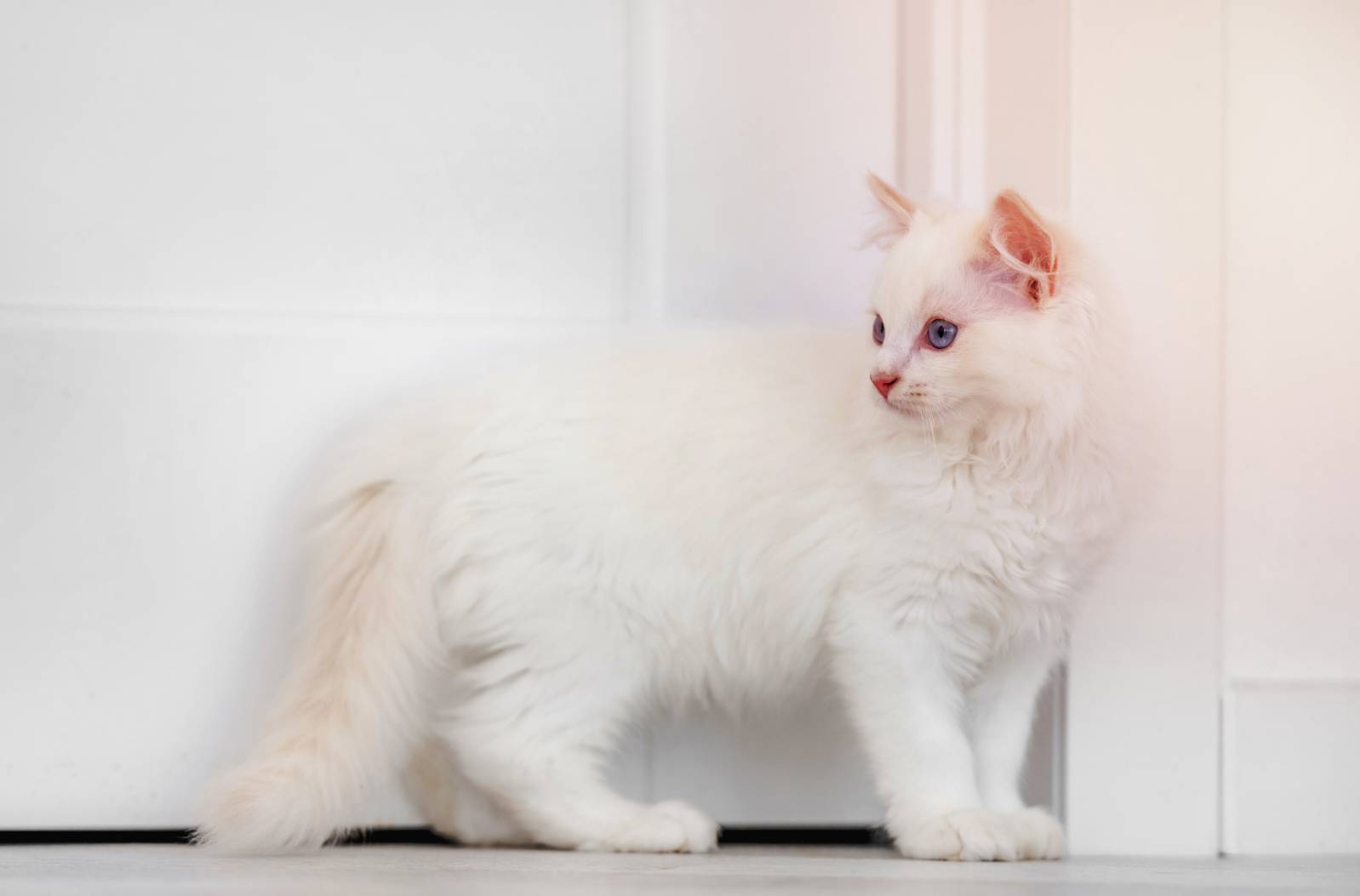It’s happened to every cat owner at one point or another: Your cat suddenly stops and freezes, staring off into the distance at seemingly nothing. Or at least, they’re staring at nothing that you can see.
But what if they were staring at a ghost, a demon, or worst of all, the Stay-Puft Marshmallow Man? The thought is certainly creepy, but is there any truth to it?
We take a look at the available evidence to see if you need to stop worrying — or if you need to call an exorcist.
As a general answer, there is no evidence at all that cats can see ghosts and spirits. The science on this is inconclusive in part because there’s also insufficient evidence to confirm the existence of ghosts and spirits in the first place.
Do Ghosts Even Exist?
The answer to that is: Who knows?
Despite tons of effort from all sorts of interested parties, there is no evidence that proves the existence of ghosts. However, there is tons of circumstantial evidence that proves that something freaky and unexplainable happened at some point in time, and as much as 13% of the population has claimed to have had a ghostly encounter. Reality shows about supernatural encounters and paranormal activities have also garnered attention, meaning that there’s definitely belief in their existence, at least in the minds of some people.
Unfortunately, though, we need a little more proof that ghosts exist before we can start testing whether cats can see them. Without clear proof that they’re real — and a foolproof method for detecting them — we’ll never know for sure whether your cat is staring at a specter or just wondering if there’s any food left in their bowl.
This may reassure you, or it may leave you disappointed in the fact that there’s no way to reach a definitive answer.

So, What Is My Cat Staring At?
When it comes to physical senses, cats are said to have the edge over humans in some categories, such as their senses of smell and hearing. However, comparisons like these, while lighthearted and perhaps interesting, are largely misleading. Fundamentally, cats have senses that help them perceive their environment the way they should – just like us!
When it comes to sight, the optic spectrum in which cats see is somewhat similar to ours for the most part. Cats can, however, see a very narrow part of the UV spectrum that we cannot. This may allow them to see things that are invisible to us. However, whether or not they’re actually seeing stuff invisible to us is anyone’s guess. Nonetheless, this does fascinate many people, as many ghost hunters use ultraviolet light to try to detect the supernatural, so maybe there is some truth to the theory (depending, of course, on the legitimacy of what ghost hunters do).
An interesting point to consider though is that most indoor cats are nearsighted, whereas most outdoor cats are farsighted! A cat’s visual acuity is anywhere from 20/100 to 20/200, which means a cat has to be at 6 meters to see what an average human can see at 20 or 30 meters. Therefore, if your cat is staring out into space, the odds of them noticing something “paranormal” will not only require its actual existence in a visual wavelength your cat can appreciate but will also require it to be close enough for your cat to see.
The odds of your cat sniffing out into space (like that spot where they last peed on the carpet) are much higher than them staring out into space. This is because they primarily interpret their world through scent, not sight.
Cats can also hear much higher frequencies than we can, so if your cat is cocking their head to one side and concentrating intently, they may be eavesdropping on something. Many rodents produce high-pitched frequencies that humans can’t hear, but your cat may be taking notice of them.

What Should I Do When My Cat Starts Acting Creepy?
It’s important to realize that just because you know the situation is safe and you believe that there is no such thing as ghosts, that doesn’t mean your cat is also aware of those facts.
Often, when your cat stops and stands completely still, it’s because they’re trying to determine if they’re in any danger. That means you should generally try to reassure your cat when they turn rigid for no reason. This is especially true if they start vocalizing, as that can be a sign that they want you to come to the rescue.
A good thing to do is make an exaggerated effort to locate the source of the disturbance. You can put your ear to the door or start looking around and under furniture, as this perhaps shows them that you also hear or see what they are. If all this is happening in the dark, you can turn the light on to show them that the room is empty. However, this advice is mostly anecdotal, as your cat may not be able to perceive your intentions either.
What’s the Verdict? Can Cats See Ghosts?
Until we figure out for certain whether ghosts exist, it’s impossible to state whether cats can see them or not.
Your cat may be seeing more dead people than Haley Joel Osment, but until we figure out a way to determine where these spirits are, your cat will have to suffer these visions of the supernatural in silence.
That’s not to say that you should worry every time your cat stops and looks around, though. Chances are, they’re just noticing something using their other senses that your feeble human senses can’t detect.
Featured Image Credit: Cat Box, Shutterstock













